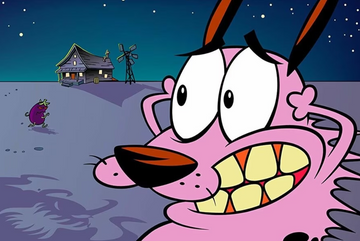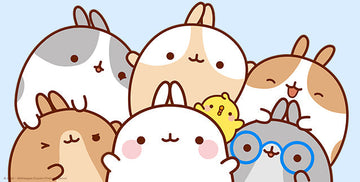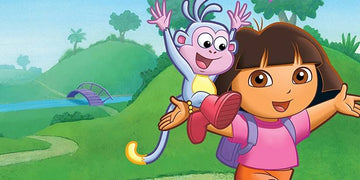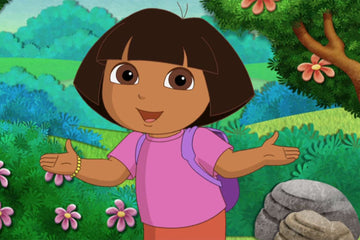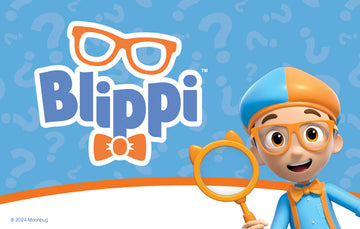Cartoons have been a part of popular culture for many years, entertaining audiences of all ages. While most people watch them for fun, some believe there are hidden messages or secrets within these shows.
The article explores 10 conspiracy theories about cartoons, revealing why some viewers think there is more than just simple entertainment behind these animations. These theories often make people look at cartoons in a new way and question what they really show.
1) The Illuminati Control Hidden Messages in ‘The Simpsons’
Some people believe that the TV show The Simpsons contains secret messages from the Illuminati. They say the creators use the show to send hidden signals about this secret group’s plans. Fans point to symbols and strange events in episodes as proof.
For example, the show sometimes uses pyramids, eyes, or other shapes linked to the Illuminati. Some characters act in ways viewers think hint at secret control or manipulation. These clues make some think the show supports or warns about the Illuminati.
However, many experts and fans disagree. They say The Simpsons is just a comedy with jokes about society. The strange symbols and scenes might be random or for fun. There is no clear proof the Illuminati control the creators or the show’s messages.
In the end, this theory remains an idea some people enjoy discussing, but it lacks strong evidence. The Simpsons is mainly known for satire, not secret codes.

2) Walt Disney’s Cryogenic Freezing After Death
One popular conspiracy theory says Walt Disney was cryogenically frozen after he died. Some believe his body was preserved in a frozen state, waiting to be brought back to life in the future.
This idea started because Disney was very interested in science and innovation. People also say there was no public funeral, which added to the rumors.
However, official records and family statements show Walt Disney was cremated shortly after his death in 1966. There is no evidence to prove he was frozen.
Experts say cryonics was not common or well-known at that time. It would have been difficult and expensive to freeze someone then.
The theory remains popular because of Disney’s image as a creator of fantasy and magic. But facts show it is just a myth, not reality.
Keep your little ones stylish year-round with our Seasonal Kids Clothing Sets . Perfect outfits for every season, all in one place!
3) Steven Universe Contains Secret Government Mind Control Codes
Some people believe Steven Universe hides secret mind control messages from the government. They think certain symbols and colors in the show are meant to influence viewers without them knowing. These fans point to the repeated use of specific shapes and mysterious phrases as possible codes.
Supporters of this theory say the show's themes about control and identity could be part of a larger plan. They argue the government uses entertainment to spread hidden ideas. The use of gems and fusion in the story is seen as a metaphor for manipulating thoughts.
On the other hand, many fans and experts say this theory lacks proof. The show’s creator, Rebecca Sugar, has not confirmed any hidden messages. They also say the symbols are related to the show’s story and characters, not secret codes.
Critics explain that fans often look for patterns that are not actually there. They suggest the theory is based on speculation, not facts. Overall, the idea of mind control codes in Steven Universe is debated but not proven.

4) ‘Adventure Time’ Predicts Future Political Events
Some fans believe Adventure Time predicts real political events. They point to episodes where characters face conflicts that resemble future elections or government changes. These moments seem to match political tensions that happened after the episodes aired.
Supporters say the show’s creator used political themes as a way to comment on real issues. They note the series includes stories about power struggles and alliances that look like actual political moves.
Critics argue this idea is just coincidence. They say many cartoons include conflict and leadership themes, which are common in stories. They believe viewers connect events to politics only after the fact.
Another point is that Adventure Time mostly focuses on fantasy, not actual politics. The show uses its stories to explore human nature and friendship rather than predict future events.
The theory remains popular because it shows how people try to find meaning in fictional stories. However, there is no clear evidence that Adventure Time planned to predict political outcomes.
Adorable doesn’t have to break the bank! Shop our Budget-Friendly collection for stylish kids’ clothing at prices you’ll love.
5) ‘Rick and Morty’ Originates from Secret Military Experiments
Some people believe that the cartoon Rick and Morty is based on secret military experiments. They say the show’s themes about advanced technology and parallel universes come from real government research.
Supporters point to the show's detailed scientific ideas and complex gadgets. They claim these ideas could only come from classified military projects. The way the show uses mind control and secret labs adds fuel to this theory.
However, there is no solid proof to back up these claims. The creators have said Rick and Morty is just science fiction inspired by other shows and movies. Experts note that many science fiction stories explore similar ideas without any military ties.
Skeptics also say that the military would not openly share secret knowledge in a public cartoon. They believe the theories confuse fiction with reality. The show is more likely a work of imagination than a reflection of hidden government experiments.

6) ‘SpongeBob SquarePants’ Characters Representing Drug Culture
Some people believe that characters in SpongeBob SquarePants represent drug culture. For example, SpongeBob’s constant happiness and energetic behavior are said to resemble a person under the influence of drugs. Patrick Star, his best friend, is thought to show the effects of being slow or confused, which some link to drug use.
Others point to the colorful and surreal underwater world as a metaphor for a drug-induced state. The characters’ odd actions and strange situations are seen by some as hidden messages about drug experiences.
However, many argue against this theory. The show is meant for kids and focuses on humor and friendship, not drug references. The creators have not supported these claims, saying the characters are just meant to be silly and fun.
There is no clear evidence that the characters were designed with drug culture in mind. The theory mostly comes from fans trying to find deeper meanings in the show’s playful content.
Sunshine-ready styles await in our Summer Clothes for Kids collection. Cool, comfy, and perfect for play all day.
7) ‘Gravity Falls’ Encodes Real-World Conspiracies
Many fans believe Gravity Falls hides codes and messages about real-world conspiracies. The show contains puzzles, secret ciphers, and cryptic symbols. Some say these clues point to government cover-ups or hidden knowledge.
The creator, Alex Hirsch, confirmed the show includes puzzles for viewers to solve. However, he said the messages are mostly for fun and storytelling, not serious claims.
Some viewers think the codes reveal information about UFOs, supernatural events, or secret societies. Others argue these ideas come from reading too much into the puzzles.
Skeptics say the conspiracy ideas lack clear proof. They see the puzzles only as clever writing to engage fans.
The show’s mix of mystery and humor makes it a natural place for such theories to grow. Whether the messages mean anything real or are just creative fun is still debated.
8) ‘Courage the Cowardly Dog’ Inspired by Paranormal Investigations
Some fans believe "Courage the Cowardly Dog" was inspired by real paranormal investigations. They argue the show’s creepy atmosphere and strange creatures come from tales told by ghost hunters. The setting, a quiet farmhouse with eerie events, fits common themes found in ghost stories and paranormal research.
Supporters of this theory say the creator may have used these stories to add a sense of mystery. The way Courage faces unknown dangers reflects a common paranormal idea—regular people encountering the supernatural. Episodes sometimes include themes of haunted places and unexplained phenomena, linking it to ghost-hunting culture.
However, there is little direct proof the show is based on real investigations. The creator has said the idea came from mixing horror and humor, not actual ghost stories. Critics note the design and characters are mostly fictional, made to entertain kids with spooky tales rather than report real events.
Overall, the theory remains popular because the show feels like a blend of scary stories and cartoons. Fans enjoy imagining a hidden connection between Courage’s adventures and the world of paranormal research.

9) ‘Avatar: The Last Airbender’ Contains Propaganda Themes
Some people say that Avatar: The Last Airbender promotes propaganda. They believe the show supports specific political ideas. For example, the Fire Nation’s role as the aggressive empire is seen as a message against war and imperialism.
Others think the show pushes values like peace, balance, and resistance against oppression. These themes could reflect real-world political opinions. Critics argue this makes the show a tool to influence young viewers.
On the other hand, fans say the series is just a story about good versus evil. They believe it explores universal ideas without pushing a hidden agenda. The creators have said their goal was to tell a fantasy story with lessons on courage and friendship.
Some view the show as a way to teach about cultural respect and understanding, not propaganda. The mix of different cultures and philosophies shows an effort to educate rather than manipulate.
The debate continues, but the show remains popular for its storytelling and deep characters. Whether propaganda or not, it raises questions about how cartoons can shape ideas.
Get classroom-ready with fresh, fun looks from our Back to School collection. Smart style for a smart start!
10) ‘The Flintstones’ Predict Early 21st Century Technology
Some believe The Flintstones predicted modern technology despite being set in the Stone Age. The show features stone and foot-powered versions of modern machines. For example, cars are powered by the driver’s feet, resembling how humans still use physical energy in some inventions.
Fans point to the animated communication devices like the “dino-phone,” which they say looks like a mobile phone. Others highlight the use of conveyor belts and appliances that mimic today’s household technology in a prehistoric style.
Critics argue these are just creative jokes, not real predictions. The show’s purpose was making humor by mixing modern life with a caveman setting. Technology on the show is often exaggerated for fun, not meant to forecast the future.
Supporters say the similarities show clever imagination and might have inspired real inventors. Opponents say it’s coincidence and reflects common human inventions, not specific predictions. The theory remains popular but is debated among fans and experts.

Dressed for Every Moment: Style That Grows with Them
From the first day of school to sunny summer adventures, your child’s wardrobe should be as dynamic and joyful as they are. Whether you're planning ahead for the seasons or shopping on a budget, we’ve got you covered with curated styles for every occasion.
Explore our versatile Seasonal Kids Clothing Sets to keep them comfy and cute all year long. Looking to save while staying stylish? Check out our Budget-Friendly picks. For a smart and stylish return to class, don’t miss our Back to School collection. And when the sun’s out, our Summer Clothes for Kids will keep them cool, bright, and playful.
Because childhood is full of unforgettable moments—make sure they’re dressed for every single one.

